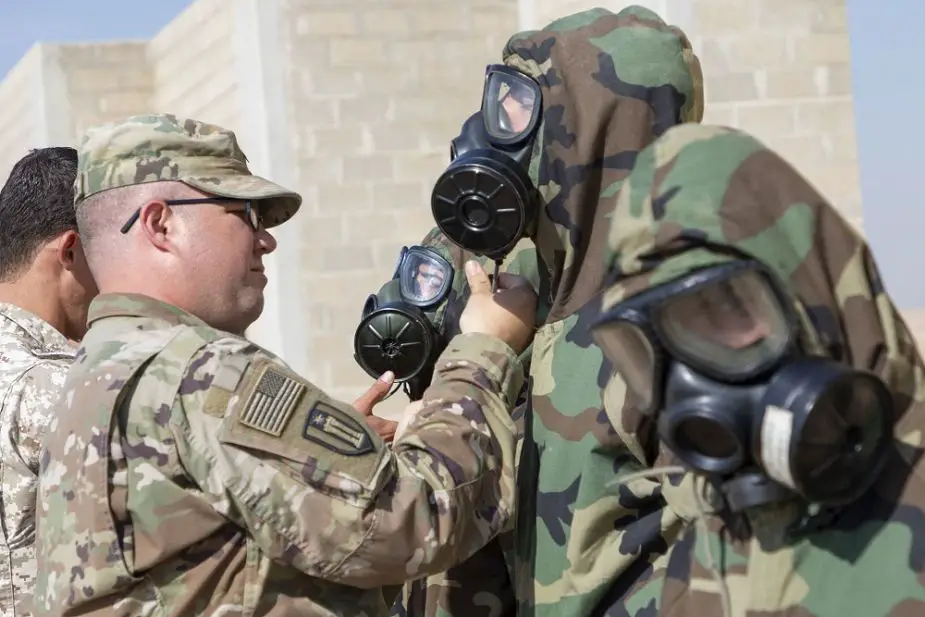Breaking news
CBRN military exercise in Jordan for US Army and Jordanian armed forces.
In preparation for unexpected chemical agent exposures, U.S. Army Soldiers, with Charlie (C) Troop, 1st Squadron, 303rd Cavalry Regiment (1-303 CAV), 96th Troop Command (96 TC), Washington Army National Guard (WAARNG), partnered with Jordan Armed Forces-Arab Army (JAF) Chemical Support Unit (CSU) instructors for a Chemical, Biological, Radiological and Nuclear (CBRN) Subject Matter Expert Exchange (SMEE) at Joint Training Center-Jordan in November.

A U.S. Army Soldier, Washington Army National Guard, checks Jordan Armed Forces-Arab Army (JAF) Soldiers’ joint service lightweight integrated suite technology hoods during a Chemical, Biological, Radiological and Nuclear Subject Matter Expert Exchange, part of the Jordan Operational Engagement Program, at Joint Training Center-Jordan in November 2019. (Picture source U.S. DoD)
The SMEE, sponsored by the Jordan Operational Engagement Program (JOEP), spanned over three weeks focusing on CBRN safety tactics including proper use of the M4 series lightweight service mask, the joint service lightweight integrated suite technology, and characteristic identifications for someone who has been exposed to a chemical agent.
According to U.S. Army Sgt. Christopher Robinson, CBRN noncommissioned officer for C Troop, 1-303 CAV, 96 TC, WAARNG, chemical threats are not always a planned nerve agent or mustard gas attack. CBRN hazards come in a variety of guises and varying methods of release. Soldiers must be ready and capable to conduct the full range of military operations to defeat all enemies regardless of the threats they pose, even chemical threats.
Toxic chemical agents have diverse classifications and can be dispersed through various means such as rockets, land mines, missiles, bombs, spray tanks and other munitions. It can also be accidently disseminated, not intended for chemical warfare, as in Ukraine’s 1986 Chernobyl Nuclear Power Plant incident where their No. 4 nuclear reactor malfunctioned and went into meltdown mode. To date, that area is still contaminated with concentrated levels of radioactive waist, prohibiting residence and retrieval of personal items. Soldiers must be mission ready and knowledgeable enough to deal with any CBRN eventualities; as warfare tactics or as civil considerations.
According to JAF 1st Lt. Mothana Al Adwan, CSU instructor, being able to gauge and handle chemical agents are essential skillsets, especially because of recent events in the Middle East. He said the CBRN SMEE allowed for both countries to share their experiences and foster the best techniques and practices for different climates and terrains.
The U.S. Army is optimizing for interoperability with all our allies and partners to strengthen alliances and deliver more effective coalition operations. The purpose of the JOEP is to partner and train with the JAF, conducting meaningful partnership training leading to promotion of stability and security in the region.


























